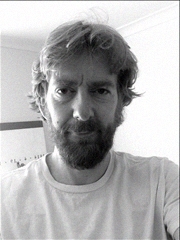Tutor HuntResources Painting Resources
We Are Not Photographs
a sample blog about the value of the painted portrait
Date : 20/05/2014
Author Information

Uploaded by : Jonathan
Uploaded on : 20/05/2014
Subject : Painting
We are not photographs. This is self-evident surely and yet photographs of us are increasingly our calling cards, particularly online.
The archetype may well concern the hopes built up from a carefully self-selected shot that has been in the dreams of the hopeful person who is about to meet someone who actually exists, coming out from behind the photograph on an internet dating site. The complexities that assemble during a life to grow a person are not going to be evident from the carefully chosen, cropped, enhanced image that glows on the iMac. Part of the process at work here is that it seems to be desirable (perhaps it always has been) to appear to be as like a homogenised ideal as possible. Beauty can be bland and yet inevitably, driven by biogenetic forces, our own expectations (derived from HBO and the cinema, as much as from the childhood imperatives built on sleepover and playground discussion) it is so darned attractive.
Something just as clear seems to happen in group photographs, perhaps particularly in the eponymous selfies. The range of possible, or even allowable expressions appears to be a narrow one. There are all sorts of affirmative reasons why this may be so, perhaps especially that pleasure, sociability and reactions to each other are naturally coded, by our learned reflexive expressions as much as by the limited number of facial muscles.
When drawing and painting people, the artist exists in the same milieu as the camera and subjects present themselves just as knowingly when being depicted. The same expressions - in fact a remarkably narrow range - are the ones available to the painter as to the camera.
Time is the large grey mammal in the studio, however. The artist wrestles with shadow and proportion, with relativity and surface, on parallel lines with the camera lens. Happily for the artist, the camera is so good at all these things it takes an artist a putative 10000 hours to learn, that it overlooks everything about the person apart from mere verimilisitude. This perhaps should be no surprise, given that it allows itself only 1/125 of a second to achieve a likeness - the limiting factor here is not the sensational power of the processor to capture millions of pixels of information about likeness, but the amount the subject is able to convey or emote in that time. 'Become yourself' Nietzsche advises. There is not enough time in front of the infinitesimal blink of the digitised camera
The artist (well, this one) revels in his inability to make a likeness in anything much less than an hour of drawing, longer when painting. This leaden-handed approach allows for conversation as well as sustained looking. Time spent with the sitter (a standing subject is a particular luxury for the artist) is all evident in the work. No necromancy or osmosis at work here (again, for this artist) but rather pentimenti and other evidence of the blessed mistakes that the camera is too proud to make. Foreshortening and flattened shadows, harmony of colour, missed feet and some wide-angle idiosyncrasies are part of another discussion but suffice it to say that one of the greatest effects of photography of course has been to allow the great artists to develop their understanding of these elements, among others, to such enriching effect. Photography and video are miraculous, just rather to do with the mere appearance of things.
Something else, perhaps just as profound as the implication that artists may achieve X-ray vision, is that the nuanced revelations of physical and psychological relationships are hard-won in a rendered group portrait. They often exist in group photographs of course, and much is often made of body language in this context, but the word 'accidental' seems to float in front of such analyses, leaving the way open for mischief-making as the apparent relationships between world leaders is examined through the turn of a head.
We are not photographs.
This resource was uploaded by: Jonathan
